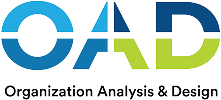The interview landscape is evolving fast. Discover the top interview questions hiring managers should ask in 2025—and how to evaluate the answers to build stronger, more resilient teams.
Table of Contents
- Interview Questions for 2025: Why They Matter More Than Ever
- The Psychology Behind Better Interviewing
- The Top 5 Interview Questions for 2025 (And Why They Work)
- How to Evaluate Interview Answers Like a Pro
- How to Uncover and Evaluate Candidate Achievements and Skills
- Integrating Behavioral Data: How OAD Enhances the Interview Process
- Interview Trends in 2025: What’s Changing and Why
- Bonus Role-Specific Questions for 2025
- Interview Playbook for Hiring Managers
- FAQ: Interview Questions, Soft Skills, and Candidate Evaluation
- Ready to Upgrade Your Hiring Process?
Interview Questions for 2025: Why They Matter More Than Ever
Hiring in 2025 is more complex—and more critical—than ever before. With fast-changing job roles, remote work norms, and higher expectations around company culture and flexibility, one bad hire can ripple through your entire organization.
And the cost? It’s more than just a lost salary. Studies estimate that a single poor hiring decision can cost companies up to 30% of the employee’s annual salary. But the hidden costs—team morale, project delays, lost clients—can be even more damaging, especially for fast-scaling companies. Additionally, questions about salary history are increasingly regulated and require careful handling in 2025, making it essential for hiring managers to stay informed about legal and ethical considerations.

In this new landscape, relying on gut feeling or surface-level questions simply doesn’t cut it. Candidates are more prepared than ever with rehearsed answers and polished resumes. What hiring managers need now are sharper tools—questions that go deeper, reveal behavioral insights, and help forecast how a candidate will truly perform in your environment.
Interviewing today isn’t just about filling a role—it’s about safeguarding your culture, retaining top performers, and future-proofing your teams. The right questions don’t just assess skills. They uncover mindset, adaptability, emotional intelligence, and long-term potential, while also helping you understand a candidate’s professional life and motivations.
What’s changed in 2025? Companies are moving away from generic “What’s your greatest weakness?”-style prompts. Instead, they’re embracing behavioral and psychological frameworks that cut through the noise.
In this guide, we’ll share:
- The top 5 interview questions every hiring manager should ask
- A few questions every hiring manager should know to identify the best candidates
- Role-specific questions for project managers, sales teams, creatives, and more
- How to evaluate answers (and spot red flags)
- Trends shaping the interview process this year
- How to use behavioral data—like OAD’s psychological survey—to improve hiring outcomes
This guide also serves as a practical resource for interview questions and answers, helping you prepare for every stage of the hiring process.
Whether you’re building a new team or fine-tuning your hiring process, this guide will help you avoid costly missteps and identify top talent with precision. You’ll also find sample answers to help hiring managers evaluate candidate responses effectively.
The Psychology Behind Better Interviewing
Many candidates default to rehearsed responses—soundbites designed to impress but lacking depth. While polish can be useful, it often masks the very qualities hiring managers are trying to evaluate.
The person interviewing isn’t looking for your full life story. They want a sharp, relevant overview of your experience—one that highlights how your professional background connects to the role, the team, and the company’s goals.
In 2025, the goal of a great job interview is to go beyond surface-level answers and uncover how a candidate actually thinks, communicates, and adapts under pressure. Structured questions and behavioral frameworks help hiring managers move past memorized responses—and toward genuine insight into long-term potential and cultural alignment.
At its core, every job interview is an attempt to predict future behavior. Yet most interviews fail to do this accurately—not because hiring managers don’t care, but because the wrong signals are being measured.
Many candidates know how to perform well in interviews. They’ve practiced answers. They’ve memorized company values. They say what they think you want to hear. But the goal of a great interview isn’t to reward polish—it’s to uncover truth. In fact, there is often no single right or wrong answer to interview questions; instead, authenticity and fit are what matter most. And that’s where psychology comes in.
Why Most Interviews Fail to Reveal the Truth
Traditional interviews often focus on credentials, experience, and likability. While these factors matter, they don’t always predict how someone will behave when under pressure, navigating conflict, or responding to feedback.
When hiring managers lack organizational skills during the interview process, critical insights often slip through the cracks. Important behavioral cues go unnoticed, follow-up questions are missed, and evaluations become inconsistent.
The result? Incomplete assessments that lead to poor hiring decisions—and costly turnover down the line.
If your process rewards charm over clarity, you’ll end up hiring candidates who shine in the interview but struggle in the actual role.
How Emotional Intelligence, Self-Awareness, and Decision-Making Show Up
You can’t see “emotional intelligence” on a résumé—but you can hear it in a candidate’s language. Emotionally intelligent individuals will reflect on how their actions impact others. They’ll own past mistakes. They’ll show growth.
Similarly, self-awareness is revealed when candidates recognize their strengths and limitations—and take active steps to improve. Candidates with a great sense of their abilities and motivations are more likely to demonstrate growth. Ask about critical feedback, and listen carefully for deflection, defensiveness, or genuine reflection.
Decision-making under pressure is another core indicator. It doesn’t just show how someone solves problems—it reveals how they think.

STAR vs Behavioral vs Hypothetical Questions
Let’s break down the three common interview question frameworks:
- STAR (Situation, Task, Action, Result): Useful for getting structured answers, but often leads to rehearsed responses.
- Behavioral Questions: Focus on what someone has done in the past. Good for identifying patterns, especially if followed with deeper questions.
- Hypothetical Scenarios: Explore how a candidate might behave—but may not reflect real tendencies unless grounded in lived experience.
The best interviews blend all three, paired with psychological insight and observation.
Why Behavioral Data Improves Interview Outcomes
Even strong questions can fall flat if interpreted subjectively. That’s why integrating behavioral data—like OAD’s scientifically validated assessment—gives hiring managers a clearer lens.
OAD helps decode the traits behind someone’s answer. Does this candidate thrive in fast-paced environments? Are they collaborative or independent by nature? Do they align with the role’s pressure levels and decision-making demands? Understanding a candidate’s alignment with the company’s goals is crucial for long-term success, ensuring that new hires contribute to the overall strategic vision.
When you combine structured questions with behavioral insights, you move from guessing to knowing.
The Top 5 Interview Questions for 2025 (And Why They Work)
Every hiring manager wants to find the perfect candidate—someone with the right skills, the right attitude, and the potential to grow within the company. But most interviews fall short because they focus too much on surface-level competence and not enough on deeper behavioral traits.
The following five questions are designed to do more than test experience. They uncover how candidates think, adapt, communicate, and fit into your organizational culture. For instance, a few examples of the kinds of insights these questions can reveal include how a candidate handles conflict, adapts to change, or collaborates with team members. Each question is supported by science-backed principles—and when paired with structured follow-ups, they can help hiring managers avoid costly missteps.
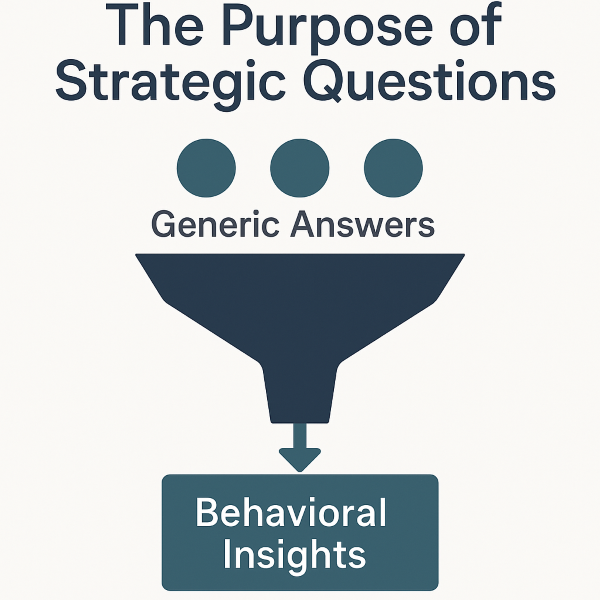
Let’s break them down one by one.
1. “Tell me about a recent challenge that forced you to adapt quickly.”
What it reveals: Adaptability, resilience, and real-world problem-solving
Modern business moves fast. Whether it’s a new competitor, a shifting customer need, or a global disruption—your team needs to adapt without losing momentum. This question cuts through generic interview chatter and forces the candidate to reflect on how they respond under pressure.
Follow-up questions to ask:
- What was your initial reaction?
- How did you prioritize your response?
- What was the final outcome—and what would you do differently now?
What to listen for: Candidates who give specific, detailed answers demonstrate actual experience. Strong candidates will provide a real example rather than a generic statement. Look for those who calmly assessed the situation, took ownership, and showed flexibility in their approach. Bonus if they include how others were impacted and what they learned from it.
Right vs wrong answer breakdown:
- Strong Answer: “In Q4 last year, our largest supplier suddenly went bankrupt. I immediately gathered our operations team, mapped alternative vendors, and created a phased shift to avoid a delivery gap. We lost zero clients and improved margins with a new supplier.”
- Weak Answer: “I’m generally good at adapting. When things change, I just go with the flow. That’s kind of my personality.”
The first answer reveals process, communication, and leadership under stress. The second reveals nothing concrete.
Hiring managers in 2025 should expect candidates to have lived through—and learned from—rapid changes. This question reveals whether they’ve turned challenges into capabilities.
2. “How do you typically respond to critical feedback?”
What it reveals: Coachability, emotional intelligence, and self-awareness
Feedback is at the heart of any growth-oriented workplace. In 2025, teams are increasingly cross-functional and feedback cycles are faster than ever. A new hire who can’t accept feedback—or worse, resents it—can disrupt productivity and morale.
This question goes beyond lip service. It explores whether a candidate actually values feedback as a tool for improvement, or just tolerates it to appear agreeable.
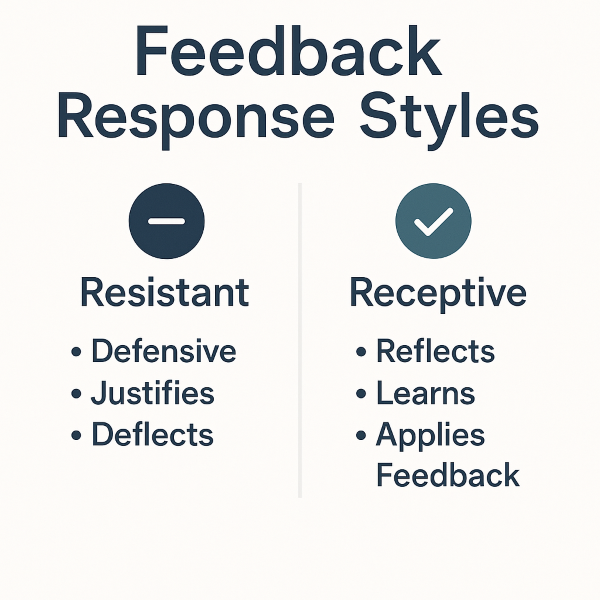
Follow-up questions to ask:
- Can you share a time when you received feedback that was hard to hear?
- What did you do with it?
- What was the result over time?
What to listen for:Look for language that indicates ownership: “I hadn’t realized I did that,” or “At first I resisted, but later I saw the value.” Strong candidates may describe a difficult moment—but they’ll also describe how they grew. Candidates who can identify and act on feedback often turn weaknesses into key strengths.
Right vs wrong answer breakdown:
- Strong Answer: “Early in my last role, my manager told me I came off as dismissive in meetings. I was surprised but took it seriously. I started asking more clarifying questions and worked with a mentor to improve my tone. Within six months, I was asked to mentor new hires on communication.”
- Weak Answer: “I don’t get a lot of feedback, to be honest. I guess no news is good news.”
The first answer shows humility, action, and growth. The second suggests a lack of awareness—or a lack of curiosity.
3. “Tell me about a time when you worked in a team with poor dynamics. How did you handle it?”
What it reveals: Conflict resolution, communication style, and collaborative problem-solving
In 2025, team collaboration is non-negotiable. Whether your organization is fully remote, hybrid, or in-office, dysfunction can slow progress—or stall it entirely.
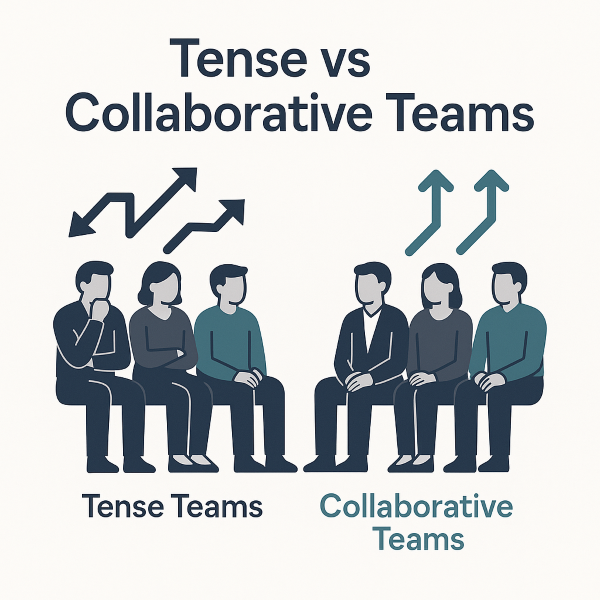
This question brings emotional intelligence into a practical, observable scenario. It shows how a candidate perceives group tension, what role they play in diffusing it, and whether they promote resolution or avoidance.
Follow-up questions to ask:
- What specifically made the team dynamic difficult?
- How did you approach your coworkers?
- Did the issue get resolved—and what was your role in that?
What to listen for:Effective collaborators don’t just point fingers—they analyze, empathize, and act. Strong answers will include how the candidate maintained professionalism, sought clarity, and facilitated productive outcomes. Candidates who foster a collaborative environment are valuable assets to any team, as they help create a supportive setting that drives shared achievement and innovation.
Avoid candidates who speak only in generalities or blame others without introspection.
Right vs wrong answer breakdown:
- Strong Answer: “On one project, two team members constantly clashed over process. It slowed everything down. I scheduled a joint meeting to clarify responsibilities and created a shared workflow in Asana. Once we defined accountability, tension dropped and we delivered early.”
- Weak Answer: “I stay out of drama. If a team is bad, I just focus on my own tasks and let management deal with it.”
One shows initiative, maturity, and systems thinking. The other shows avoidance—and signals they may become part of the problem, not the solution.
In high-stakes environments, you need team players who don’t just survive dysfunction—they fix it.
4. “You’re juggling multiple priorities with the same deadline. Walk me through your approach.”
What it reveals: Time management, decision-making under pressure, and prioritization
Every company wants productive employees—but what defines productivity varies by role, industry, and urgency. What doesn’t change? The need to prioritize effectively when everything feels urgent. Time management is one of the most important skills hiring managers look for in candidates, as it demonstrates your ability to handle competing priorities and deliver results.
This question simulates one of the most common workplace realities: conflicting deadlines. It forces candidates to think beyond task lists and explain how they think.

Follow-up questions to ask:
- How do you decide what gets done first?
- What happens when everything feels important?
- Have you ever missed a deadline? What did you learn from it?
What to listen for:Strong answers reflect clarity, systems thinking, and real-world strategies. You want to hear how the candidate breaks down work, communicates with stakeholders, and avoids burnout.
Time management isn’t just about doing more—it’s about knowing what not to do.
Right vs wrong answer breakdown:
- Strong Answer: “When I managed two product launches with overlapping timelines, I blocked time for deep work, negotiated priorities with stakeholders, and automated weekly status updates. I also flagged a scope risk early, which saved my team a major delay.”
- Weak Answer: “I just try to work faster. I put in extra hours until everything’s done.”
The first answer shows leadership, communication, and strategy. The second reveals burnout behavior—and no sustainable process.
Great hires know how to work smart, not just hard. This question helps you find them.
5. “What kind of work environment brings out your best performance?”
What it reveals: Cultural fit, work style preferences, and alignment with company values
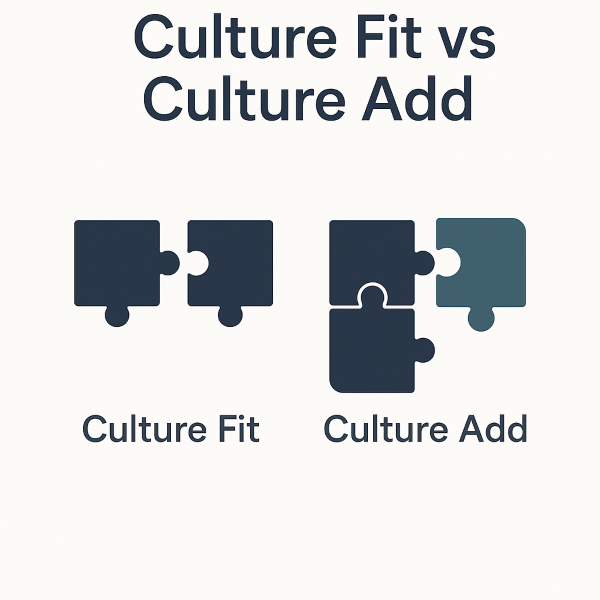
Even the most skilled hire can fail if they’re in the wrong environment. Maybe they need constant collaboration, but your teams are independent. Maybe they prefer stability, but your company thrives on change.
This question draws out what’s often overlooked: how the candidate feels when they’re doing their best work—and whether that matches what your company actually offers.
Follow-up questions to ask:
- What’s a workday that energized you? What made it work?
- How do you feel in high-pressure vs high-autonomy environments?
- What kind of leadership helps you thrive?
What to listen for:You’re not looking for a “right” answer—you’re listening for alignment. Do they describe an environment that matches your culture’s pace, structure, and communication style? Are they self-aware about what works for them and why? Consider how their preferences align with your company’s culture, since a strong match here often leads to greater job satisfaction and long-term success.
Some candidates will tell you they “thrive anywhere.” Probe deeper. Look for nuance and clarity.
Right vs wrong answer breakdown:
- Strong Answer: “I love fast-paced environments where priorities can shift. I do best when I have autonomy but can check in weekly with my manager. I also like knowing the ‘why’ behind our goals—it keeps me motivated.”
- Weak Answer: “I’m pretty flexible. I don’t really care what the environment is, I just do my job.”
The first shows self-awareness and values alignment. The second sounds like a mismatch waiting to happen.
The right work environment amplifies strengths—and reduces friction. This question helps you prevent misalignment before it starts.
How to Evaluate Interview Answers Like a Pro
Even the best questions fall flat if you don’t know how to interpret the answers. In 2025, hiring managers need more than intuition—they need a reliable framework for spotting depth, drive, and alignment beneath the surface. Pay close attention to how candidates demonstrate valuable qualities through their responses, such as specific examples of achievements or personal growth.
Here’s how to sharpen your evaluation strategy and avoid common traps.

Rehearsed vs Reflective
One of the biggest red flags in interviews? Answers that sound too perfect.
Rehearsed answers follow a script. They check the boxes but lack emotion, struggle, or growth. Reflective answers—on the other hand—show vulnerability, decision-making, and real-world messiness. That’s where the insight is. Candidates who show genuine interest in the role are more likely to provide thoughtful, reflective responses, as their enthusiasm leads to deeper and more authentic answers.
When in doubt, ask: “What was the hardest part about that?” You’ll quickly learn whether the story is real—or just well-rehearsed.
Look for Specificity Over Generalization
Strong candidates speak in specifics:
- “I led a cross-functional team of six to finish a product sprint two weeks early.”
- “I made a mistake in a client proposal, owned it, and saved the account with a proactive strategy.”
To verify the depth of a candidate’s experience, ask for a few examples that demonstrate their skills in action.
Vague responses like “I always work hard” or “I’m a team player” don’t mean much without evidence. Dig deeper.
Behavior Beats Buzzwords
Every candidate knows the keywords: “collaboration,” “initiative,” “leadership.” But what matters is whether they’ve demonstrated those qualities in action. For example, instead of just mentioning “leadership skills,” candidates should provide concrete examples of how they managed team dynamics, made decisions, or resolved conflicts to truly showcase their leadership abilities.
Use follow-ups like:
- “What specifically did you do?”
- “What changed as a result?”
- “How did others respond to your actions?”
The best interviews are layered—not linear.

Mind the Nonverbals
Watch for body language cues:
- Do they light up when discussing a challenge?
- Do they hesitate when owning a mistake?
- Are they rehearsed or genuinely engaged?
- Do they remain calm when describing stressful situations or high-pressure moments?
Nonverbal behavior often reveals more than the words themselves.
Use the STAR Framework (But Don’t Rely on It Alone)
The STAR method (Situation, Task, Action, Result) helps structure answers—but don’t stop there. The most effective STAR responses include a real example from the candidate’s experience.
The real gold comes from what they learned, how they think, and how they’ve changed. Layer follow-up questions on top of STAR to get the full picture.
How to Uncover and Evaluate Candidate Achievements and Skills
Evaluating candidate achievements and skills is a critical part of any effective hiring process—but it’s not just about checking boxes.
For hiring managers, the real goal is to uncover the value a candidate brings beyond their résumé. That means asking questions that surface impact, not just activity:
- What challenges did they solve?
- What results did they deliver?
- How did they approach problems others couldn’t?
In today’s competitive landscape, it’s not enough to know what a candidate has done. You need to understand how they did it—and whether those capabilities translate to your company’s unique environment.
That’s the difference between a qualified hire and a high-impact one.
Why Achievements Matter More Than Ever
Job titles rarely tell the full story. In today’s hiring landscape, two candidates can share the same title—but deliver vastly different results. That’s why focusing on achievements gives hiring managers a clearer, more accurate lens for evaluating impact.
Ask:
- What measurable results did they produce?
- What role did they play in the outcome?
- How did their work move the business forward?
A candidate who led a product launch that opened new markets—or improved a workflow that saved thousands of hours—isn’t just experienced. They’re outcome-driven.
These examples offer more than just talking points. They reveal how a candidate thinks, where they create value, and how they might contribute to your company’s success in a real, measurable way.
Asking for Impact, Not Just Activity
It’s one thing for a candidate to describe their responsibilities. It’s another to articulate the impact of their work.
Strong hiring managers shift the conversation from “What did you do?” to “What did you change?” or “What outcome did you influence?” These subtle shifts bring out deeper, more revealing answers.
Try reframing routine prompts into performance-oriented ones:
- “What are you most proud of in your last role?”
- “What results did your efforts produce for the team or company?”
A strong answer sounds like this:
“I noticed our onboarding process caused delays for new hires. I led a cross-functional project to streamline it—cutting onboarding time by 40% and improving satisfaction scores significantly.”
That response reflects more than experience. It demonstrates initiative, problem-solving skills, and a clear business result—all traits that matter in today’s hiring landscape.
Spotting Transferable Skills in Unlikely Places
The best candidate for the role may not come from your industry—and that’s not a red flag. In fact, it might be a competitive advantage.
Transferable skills like project management, cross-functional collaboration, and the ability to juggle multiple tasks are often developed in a variety of roles. What matters is whether the candidate can apply those skills to your company’s challenges.
Hiring managers should look for evidence of capability, even when the job titles don’t match. For example:
- “Tell me about a time you managed multiple projects without formal authority.”
- “How have you used project management skills—even when it wasn’t your official role?”
These prompts reveal how candidates adapt, solve problems, and operate under pressure—regardless of where they’ve worked.
Experience matters. But adaptability, judgment, and transferable skills often matter more.
Red Flags: When Achievements Don’t Add Up
Achievements are one of the best signals of future success—but only when they’re real, relevant, and repeatable.
Hiring managers should stay alert to red flags that suggest a candidate’s claims may be overstated. If answers lack specifics, timelines, or measurable outcomes, it’s time to dig deeper.
Ask follow-up questions like:
- “Can you walk me through the steps that led to that result?”
- “How did you define and measure success on that project?”
A high-performing candidate will be able—and eager—to explain their process. Someone who struggles to elaborate may be signaling a gap in self-awareness, preparation, or credibility.
By focusing on clear impact, transferable skills, and truth over polish, hiring managers make more informed decisions—and avoid costly mis-hires. Because in the end, you’re not just filling a role. You’re investing in long-term team performance.
Integrating Behavioral Data: How OAD Enhances the Interview Process

Great interviews tell a story. But even the best story needs context—and that’s where behavioral data comes in.
Resumes show history. Interviews show potential. But behavioral assessments reveal something deeper: the how and why behind someone’s actions.
OAD’s scientifically validated survey gives hiring managers a psychological blueprint of how a candidate thinks, reacts, and fits into your company’s ecosystem. The assessment can also identify whether a candidate thrives in independent work settings, helping you understand their preference for autonomy versus collaboration.
The Science Behind the OAD Assessment
The OAD assessment is rooted in decades of research and behavioral psychology. It measures personality traits, decision-making style, assertiveness, emotional control, and more—giving you objective data to balance out subjective impressions. Additionally, it provides insights into a candidate’s management style, helping you understand how they may influence team dynamics and the work environment.
Unlike generic personality quizzes, the OAD survey is specifically designed for business outcomes: hiring, team alignment, leadership development, and performance prediction.
Real-World Impact: A Fast-Growing Company Case Study
One of our clients—a technology company scaling from 60 to 200 employees—used OAD to evaluate cultural fit and leadership readiness across new hires.
By integrating the survey into their interview process, they:
- Reduced their 90-day turnover rate by 37%
- Identified misalignments before making offers
- Built more balanced teams with complementary work styles, which led to improved outcomes on team projects
The result? Faster onboarding, stronger team dynamics, and measurable performance gains across departments.
How Behavioral Data Improves Interviews
When you combine structured interview questions with OAD insights, you get a 360-degree view of the candidate.
Let’s say someone answers a time management question well—but their OAD results show they struggle with task sequencing under pressure. For example, a project manager could use these insights to identify areas for improvement and enhance overall team performance. Now you can dig deeper during the second interview.
Or imagine two candidates give equally strong answers. The one whose behavioral profile better matches the team’s needs is your stronger long-term bet.
It’s no longer about guessing who might work—it’s about knowing who will.
Reducing Bias, Increasing Confidence
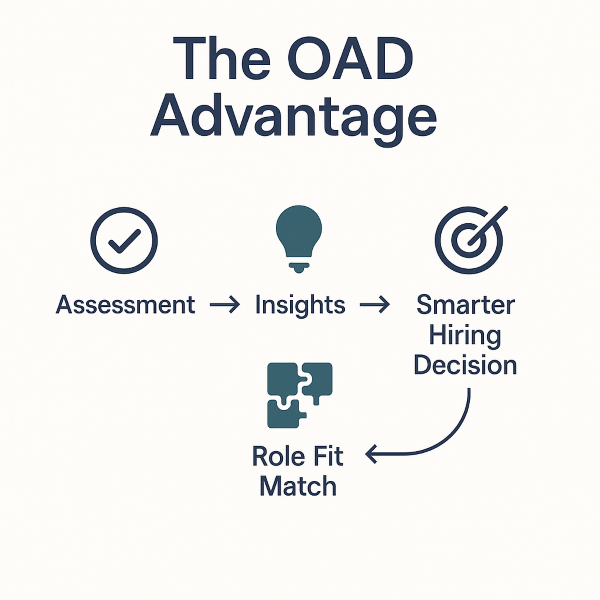
Gut instinct is powerful—but it’s also prone to bias. Behavioral data helps neutralize unconscious preferences and focus on role alignment. By relying on objective data, you can identify valuable qualities in candidates that might otherwise be overlooked.
With OAD, your interviews don’t just feel more structured—they are more objective, repeatable, and effective. That means fewer regrets, stronger teams, and a smarter hiring process you can actually scale.
Interview Trends in 2025: What’s Changing and Why
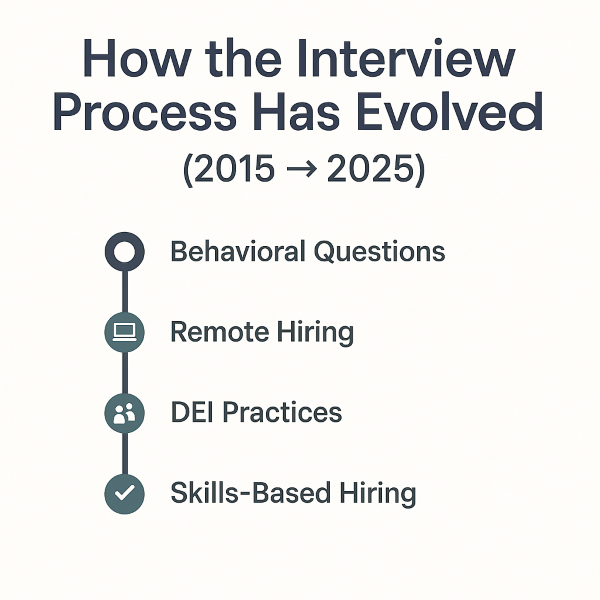
The interview process has never been static—but in the past five years, it’s been radically reshaped by technology, talent expectations, and global shifts in how we work.
In 2025, hiring managers face a new set of challenges—and opportunities. Personal growth during career transitions is now seen as a positive attribute, with employers valuing candidates who have used periods of change for self-improvement and reflection. To stay ahead, you’ll need to adapt not just your questions, but your entire approach to identifying top talent.
Here’s what’s changing (and why it matters).
The Rise of AI Screening—And Why Human Interviews Still Matter
AI-powered tools now filter résumés, conduct asynchronous video interviews, and analyze verbal cues. These technologies are frequently used to screen candidates for roles like software developer, where technical expertise and problem-solving abilities are key. While these tools improve efficiency, they can’t fully replace the nuance of a real conversation.
Human interviews remain essential for assessing emotional intelligence, communication style, and cultural alignment—qualities that algorithms can’t reliably detect.
Smart companies are blending AI efficiency with human judgment to scale without losing insight.
DEI is Reshaping Interview Structures
Diversity, equity, and inclusion (DEI) efforts are influencing how interviews are structured—from blind résumé reviews to panel interviews that reduce individual bias.
In 2025, many companies have standardized their question sets, added inclusive language training for hiring managers, and created rubrics for evaluating soft skills more equitably. Questions about a candidate’s current company are now more carefully structured to avoid bias and ensure fairness in the interview process.
If your team isn’t adapting to these practices, you’re not just behind—you’re likely missing out on top talent.
Experience is Out—Capability is In

Traditional job descriptions focused on tenure and titles. But leading organizations are shifting toward skills-based hiring: looking for demonstrated capability, not just experience.
In interviews, that means more emphasis on what candidates can do, not just what they have done. Hypothetical questions, role simulations, and behavioral assessments are helping bridge that gap. It’s important for candidates to show how they’ve acquired new skills relevant to the role, highlighting their adaptability and commitment to personal development.
The future isn’t about job history—it’s about job readiness.
Remote Hiring Is the New Normal
Even for companies with physical offices, remote interviewing is now a default step. This changes the game in several ways:
- Candidates must showcase communication skills via video
- Managers need sharper listening skills and more structured evaluation frameworks
- Team dynamics are harder to assess—making culture-fit questions even more critical
- Interviewers often ask about the candidate’s present job responsibilities and how they adapt to remote work environments
Remote doesn’t mean informal. In fact, it requires more preparation on both sides to ensure a clear, fair process.
Soft Skills Are Now Core Skills
In 2025, “soft” skills like public speaking, emotional regulation, adaptability, and self-awareness aren’t extras—they’re essentials.
Experiences such as grad school can play a significant role in helping candidates develop these essential soft skills.
Job interviews are being redesigned to surface these skills early:
- How do candidates talk through setbacks?
- How do they handle feedback?
- Do they show empathy, clarity, and ownership?
Your top performers in the next five years won’t just be technically competent—they’ll be humanly effective.
Bonus Role-Specific Questions for 2025
Every role has its own unique demands—and while the core behavioral questions help establish baseline fit, role-specific questions bring the interview into sharper focus. For creative positions such as a graphic designer, unique interview questions are essential to assess relevant skills and creative thinking.
Below are five bonus questions, each tailored to a common role. Use them to dig into the behaviors that matter most in each context.

For Project Managers: “How do you lead when priorities shift mid-project?”
Why it works: Project management is rarely linear. This question reveals how the candidate communicates change, reassigns resources, and maintains stakeholder alignment under pressure. Additionally, understanding a candidate’s career path can provide insight into how their professional journey shapes their approach to shifting priorities and adapting to new challenges.
Follow-ups:
- What’s your first move when a timeline or scope changes?
- How do you keep your team motivated through uncertainty?
Behavioral trait: Flexibility + strategic thinking under ambiguity
For Sales Teams: “Tell me about a time when you lost a deal. What happened next?”
Why it works: Sales is about resilience. This question surfaces how a candidate processes failure, learns from rejection, and maintains confidence.
Follow-ups:
- Did you follow up with the prospect? Why or why not?
- What did you change in your approach after that experience?
- Have you ever coached or supported an underperforming employee after a lost deal? What steps did you take and what was the outcome?
Behavioral trait: Coachability + grit
For Creatives: “Describe a time when you had to defend your work to someone who didn’t ‘get it.’”
Why it works: Creative roles require both vulnerability and conviction. This question reveals whether the candidate can advocate for their ideas while staying open to feedback. Candidates with a master’s degree in a creative field may bring additional perspective and depth to defending their work.
Follow-ups:
- What was the core disagreement about?
- How did you explain your creative choices?
Behavioral trait: Communication + professional maturity
For Leadership Roles: “What’s a tough decision you made that wasn’t popular—but you stood by it?”
Why it works: Leaders face trade-offs. This question brings out a candidate’s values, confidence, and willingness to own difficult calls.
Follow-ups:
- How did you communicate the decision?
- What was the long-term outcome?
- How did experiences from places you have previously worked influence your decision-making in this situation?
Behavioral trait: Integrity + strategic courage
For Technical Roles: “Tell me about a time when the technical solution wasn’t the right one for the business.”
Why it works: The best technical talent thinks beyond the code. This question surfaces awareness of business context, user needs, and adaptability in cross-functional teams. Candidates with a background in environmental science may also approach technical solutions with sustainability in mind, aligning their expertise with the company’s mission.
Follow-ups:
- How did you realize the misalignment?
- What alternative path did you take?
Behavioral trait: Business acumen + cross-functional collaboration

Interview Playbook for Hiring Managers
You’ve got the questions. You’ve got the frameworks. But how do you pull it all together into a consistent, effective interview process—one that works across teams, roles, and locations?
That’s what this playbook is for. It’s not just about asking smart questions. It’s about running smart interviews. The framework also helps you evaluate and compare candidates, making it easier to identify what sets your top choice apart from other candidates.

Build a Repeatable Framework
Start by building a core structure you can adapt to any role:
- Start with 2–3 warm-up questions to ease the candidate in
- Review the candidate’s cover letter for additional context and insight into their motivations and suitability before the interview
- Use your 5 core behavioral questions to assess adaptability, coachability, collaboration, time management, and culture fit
- Add 1–2 role-specific questions depending on the position
- Leave time for candidate questions and clarifying discussion
This balance ensures you gather deep insights without overwhelming the conversation.
Blend Culture, Competency, and Character
Every candidate brings three dimensions:
- Culture Fit: Do they align with your values, pace, and communication style?
- Competency: Can they do the job technically and functionally? How do their current job responsibilities align with the requirements of this new role?
- Character: How do they behave under pressure, in conflict, and in growth situations?
Your interview questions—and your follow-ups—should intentionally probe each one.
Plan the Flow, Not Just the Questions
A great interview is more than a checklist. It’s a guided conversation.
Plan for natural transitions. For example:
- After discussing time management, transition into priorities and role-fit
- If a candidate shares a failure, follow up with what they learned and how it shaped their work habits
- When discussing career goals, ask what the candidate is seeking in a new position to understand their alignment with the role and company
Use empathy and curiosity to create a space where candidates open up. That’s where the most valuable information lives.
Don’t Interview Alone (When Possible)
Structured panel interviews help reduce bias and increase signal accuracy.
If you’re hiring for a key role, bring in one or two stakeholders to focus on different aspects—culture, role skill, team fit. During the interview, consider asking how the candidate’s coworkers describe their work style or contributions, as this can reveal valuable insights into their soft skills and team dynamics. Debrief after the call and compare notes with structured scoring.
What Great Hiring Managers Do Differently
- They listen more than they talk
- They probe without interrogating
- They prepare thoroughly and consistently
- They follow a clear scoring rubric tied to success traits
- They use behavioral data—not just instinct—to make final decisions
- They apply the same approach to every interview to ensure fairness and consistency
This approach doesn’t just lead to better hires. It leads to stronger, more aligned teams—ones that drive real business growth.
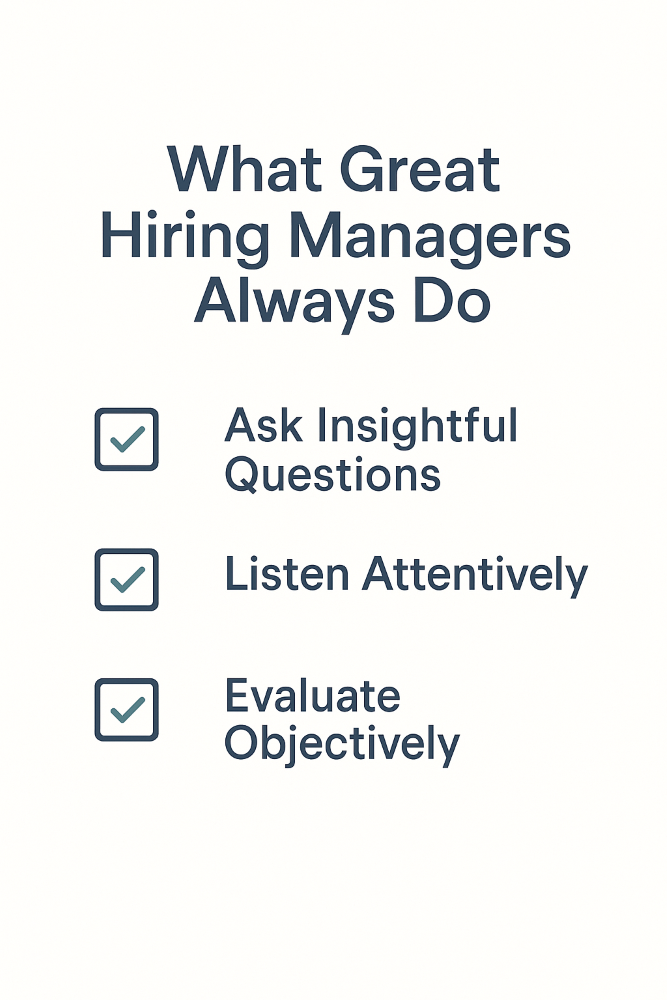
FAQ: Interview Questions, Soft Skills, and Candidate Evaluation
This section answers the most common (and most misunderstood) questions hiring managers ask when building a modern interview process, including questions about your professional achievement.
What are the most common interview questions in 2025?
By 2025, many hiring managers are moving away from generic prompts like “Tell me about yourself” or “What’s your greatest weakness.”
Instead, they’re asking questions that dig into core traits like adaptability, emotional resilience, and collaborative skills. Common modern interview questions include:
- “Tell me about a time you had to adapt quickly.”
- “How do you typically respond to critical feedback?”
- “What kind of work environment helps you thrive?”
- “What is your greatest professional achievement?”

These questions reveal more about the person behind the résumé—and help hiring teams make smarter decisions.
How do I know if a candidate is the right cultural fit?
Cultural fit isn’t about hiring someone who thinks like you—it’s about hiring someone who can thrive in your company’s real environment.
Ask:
- What kind of pace do they prefer?
- How do they handle structure—or ambiguity?
- What kind of feedback and leadership style helps them succeed?
Avoid questions about a candidate’s personal life to maintain professionalism and respect boundaries.
Look for self-awareness, not just alignment. Candidates who can articulate what works for them are more likely to perform well—and stick around.
What’s the difference between a strong and a rehearsed answer?
A strong answer shows:
- Specific context
- Clear action taken
- Measurable impact or personal reflection
There is rarely a single right or wrong answer to behavioral questions—honesty and personal preferences matter most.
A rehearsed answer sounds polished but lacks depth. To uncover the truth, ask a follow-up like: “What surprised you about that situation?” or “What would you do differently now?”
Strong candidates welcome the chance to go deeper. Others may struggle when they leave their script.
How do I evaluate emotional intelligence in an interview?
Emotional intelligence (EQ) shows up in how candidates talk about people—not just tasks.
Look for signs like:
- Acknowledging other perspectives
- Owning mistakes without defensiveness
- Describing feedback or conflict with empathy and clarity
EQ is easier to detect when candidates reflect on how they felt and what they learned. Pay attention to tone and storytelling—not just answers. Candidates who thoughtfully discuss their professional life often reveal deeper self-awareness and motivation, which are key aspects of emotional intelligence.
What tools help hiring managers make better decisions?
Beyond well-crafted questions, smart hiring managers are using:
- Behavioral assessments like OAD to uncover psychological fit
- Structured scoring rubrics to reduce bias
- Panel interviews for balanced evaluation
- Interview debrief templates to compare notes consistently
- Comprehensive guides to interview questions and answers as a resource for preparation
These tools turn hiring from guesswork into a repeatable system—especially when combined with behavioral insights.
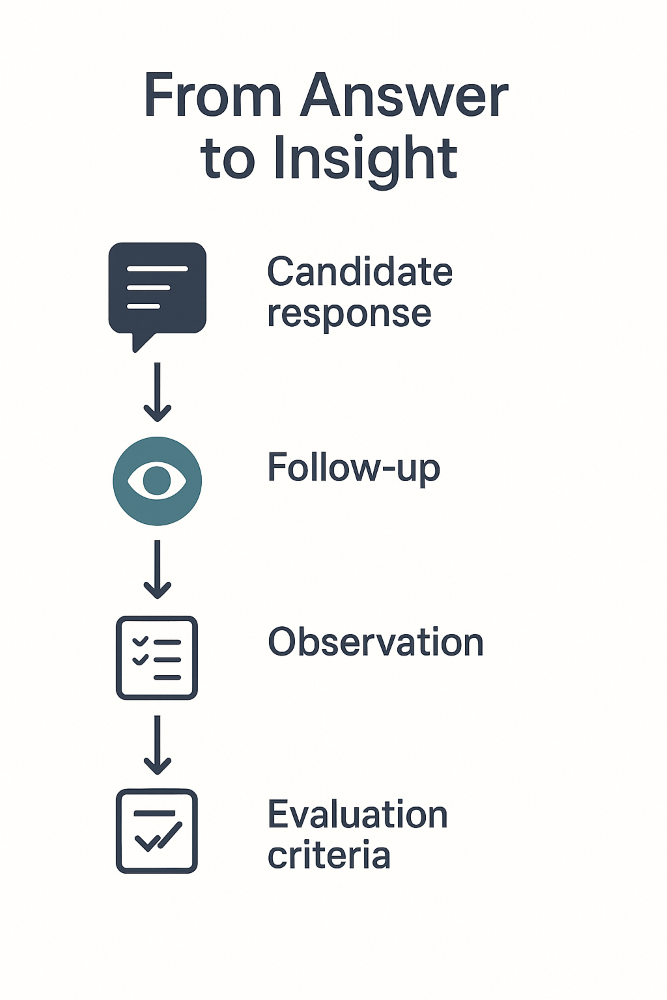
Ready to Upgrade Your Hiring Process?
Book Your Free Demo of the OAD Assessment
Smart interview questions are just the start. To truly reduce turnover, boost performance, and hire with confidence, you need deeper insight—before the offer is made.
That’s where OAD comes in. Our behavioral assessment reveals the personality traits, decision-making patterns, and communication styles that impact team fit and long-term performance. It gives hiring managers the psychological clarity to avoid mis-hires—and make faster, more confident decisions.
You’ll see how a candidate aligns with your role’s demands, your company’s culture, and your existing team dynamics. OAD also supports ongoing professional development for new hires by identifying growth opportunities and aligning them with your organization’s values. No guesswork. No surprises. Just better hiring outcomes.
Want to see how it works? Book a free demo and discover how top-performing companies are integrating OAD into their hiring process. You’ll get a hands-on walkthrough and insights tailored to your team’s needs.
